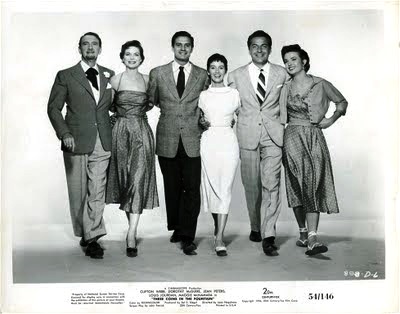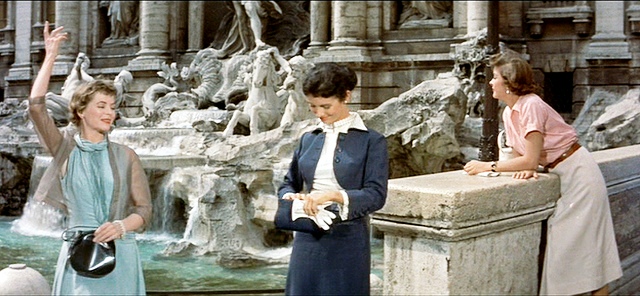 Three Coins in the Fountain is solid proof of how easily entertained we were in the 1950’s. This piece of cinematic junk food was actually nominated for the Best Picture Oscar in the year of its release. Sadly, watching it today, one can’t help but notice that the background scenery is the most interesting part of the movie!
Three Coins in the Fountain is solid proof of how easily entertained we were in the 1950’s. This piece of cinematic junk food was actually nominated for the Best Picture Oscar in the year of its release. Sadly, watching it today, one can’t help but notice that the background scenery is the most interesting part of the movie!

Made when Cinemascope was the newest gimmick studios were employing to lure people away from their newly beloved TV sets, Three Coins involves the extremely thin story of three American working girls searching for husbands in Rome, with a brief side trip to Venice.
Jean Peters, Maggie McNamara and Dorothy McGuire play the ladies in question – designed to represent young, very young and dangerously approaching middle age. They all work as secretaries – Peters and McNamara for a make-believe U.S. Government agency, “The United States Distribution Agency,” and McGuire for expatriate American author Clifton Webb (playing a far less venomous version of his character from Laura).
The girls live in an impossibly huge, luxuriously furnished apartment and Peters and McGuire also seem to own extensive designer wardrobes, indicating secretaries must have earned fantastic salaries in those times.
 The scenery is fantastic, but one begins to notice that this is an Italy devoid of Italians. Only Peters' love interest, Rossano Brazzi, and his family in the country are authentically Italian. McNamara’s love interest is an Italian prince, played by Louis Jordan. The other cast members courteously refrain from asking the prince why he has an English mother (Cathleen Nesbitt) and speaks with a French accent. Whenever these characters visit famous landmarks, there are no tourists or locals to be seen anywhere.
The scenery is fantastic, but one begins to notice that this is an Italy devoid of Italians. Only Peters' love interest, Rossano Brazzi, and his family in the country are authentically Italian. McNamara’s love interest is an Italian prince, played by Louis Jordan. The other cast members courteously refrain from asking the prince why he has an English mother (Cathleen Nesbitt) and speaks with a French accent. Whenever these characters visit famous landmarks, there are no tourists or locals to be seen anywhere.
The film is billed as a romantic comedy. It’s very long on romance and very short on comedy. The title is also something of a cheat as only two of the American girls actually toss a coin into the legendary Trevi Fountain.

Curiously, the film does not open with credits. It opens with an uncredited Frank Sinatra singing the now-classic title tune (which did win the Best Song Oscar) to a montage of breath-taking footage of fountains all around Rome. When the song finishes, there is a brief dip to black and then we fade up on the film’s opening titles. Apparently, movie audiences had a lot more patience back in 1954.
Still, it does make for the most interesting travelogue on Rome ever filmed.
